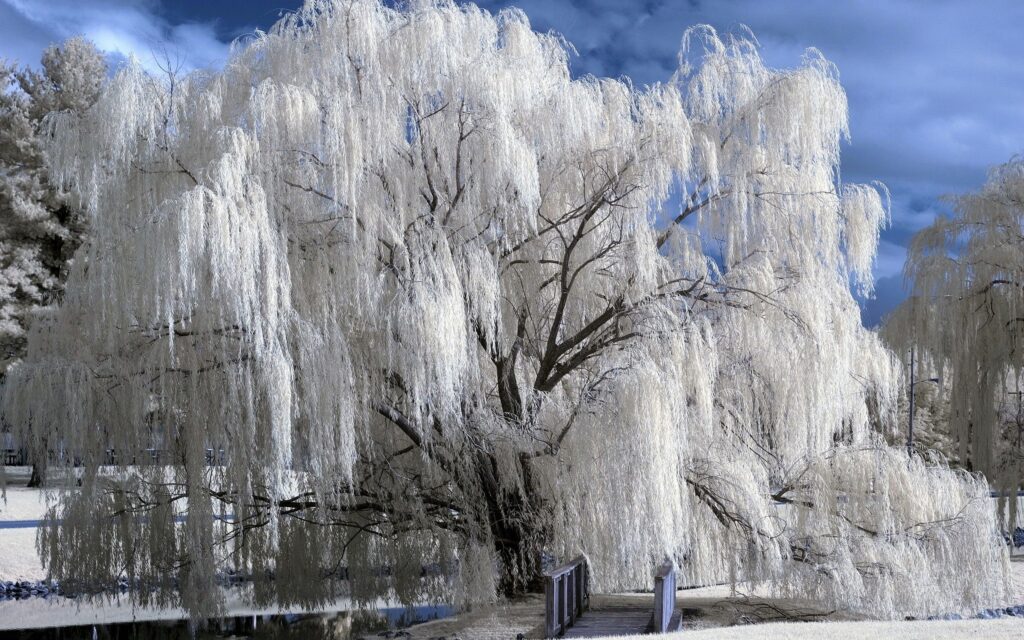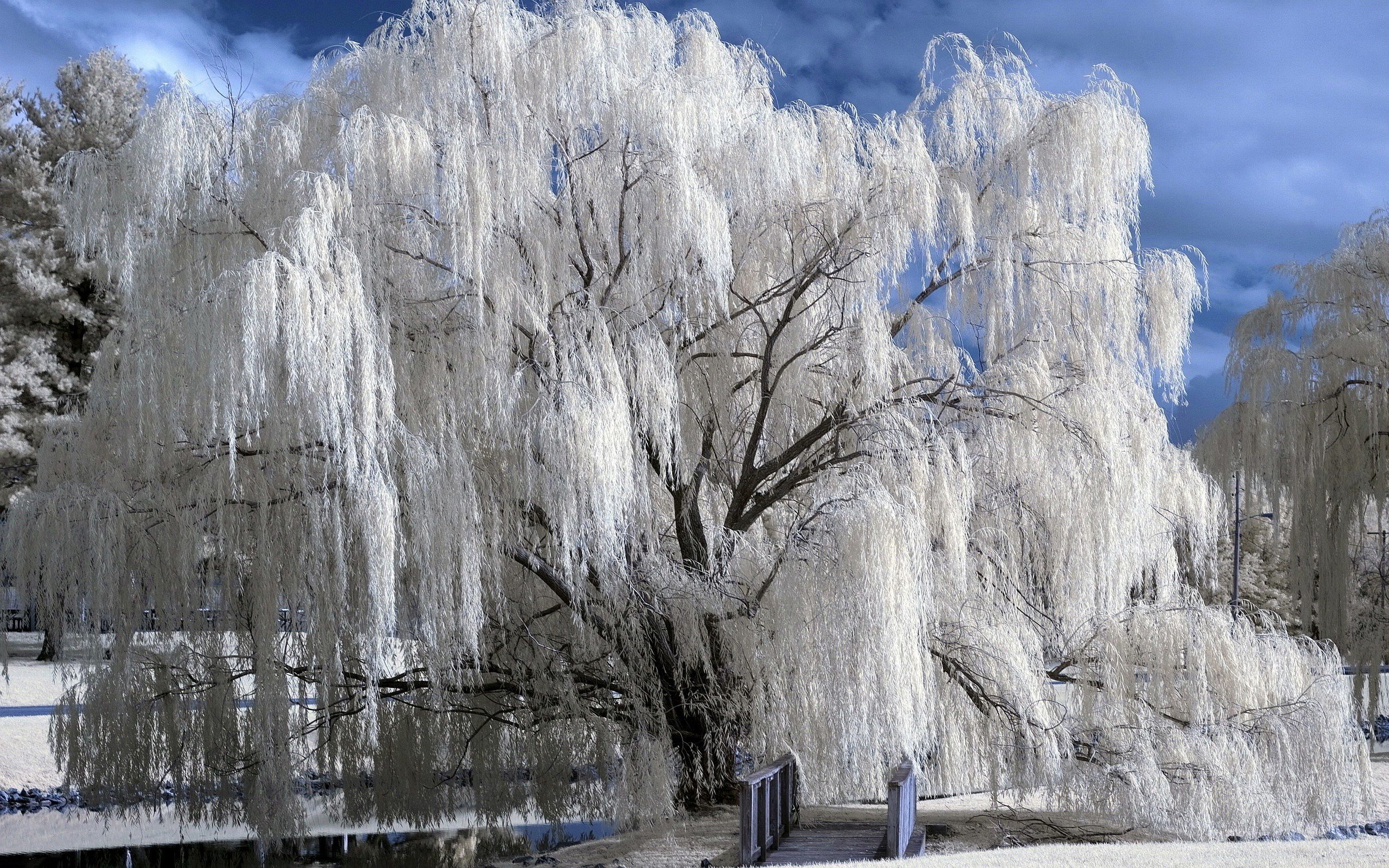
Crafting a Serene Escape: The Art of Weeping Willow Landscapes
The weeping willow landscape is a timeless image, evoking feelings of peace, tranquility, and a touch of melancholy. These graceful trees, with their cascading branches that sweep the ground, have captivated artists, poets, and gardeners for centuries. But creating a successful weeping willow landscape requires more than just planting a tree. It demands careful planning, an understanding of the tree’s needs, and a vision for the overall design. This article explores the intricacies of incorporating weeping willows into your outdoor space, transforming it into a serene and captivating haven.
Understanding the Weeping Willow
Before embarking on a weeping willow landscape project, it’s crucial to understand the characteristics of Salix babylonica, the most common species of weeping willow. These trees are known for their rapid growth, reaching heights of 30 to 50 feet and spreading just as wide. Their long, slender branches droop gracefully, creating a curtain-like effect that provides shade and visual interest. The leaves are lance-shaped and a vibrant green, turning yellow in the fall.
However, weeping willows are not without their challenges. They are notorious for their aggressive root systems, which can invade sewer lines, septic tanks, and foundations. They also require ample moisture and are susceptible to certain diseases and pests. [See also: Choosing the Right Tree for Your Yard] Therefore, careful consideration of the planting site and ongoing maintenance are essential for a healthy and thriving weeping willow.
Choosing the Right Variety
While Salix babylonica is the most common weeping willow, several other varieties offer unique characteristics. The Wisconsin weeping willow, for example, is more cold-hardy than the traditional species, making it suitable for colder climates. The golden weeping willow boasts bright yellow branches, adding a splash of color to the landscape. Researching different varieties will help you choose the best option for your specific climate and aesthetic preferences.
Planning Your Weeping Willow Landscape
The success of any weeping willow landscape hinges on careful planning. Consider the following factors before planting:
- Space: Weeping willows require ample space to grow and spread. Avoid planting them near buildings, underground utilities, or other structures that could be damaged by their roots.
- Soil: These trees thrive in moist, well-drained soil. Amend heavy clay soils with organic matter to improve drainage.
- Sunlight: Weeping willows need at least six hours of sunlight per day.
- Water: Consistent moisture is crucial, especially during the first few years after planting.
Once you’ve assessed the site conditions, develop a landscape design that complements the weeping willow. Consider the tree’s mature size and shape when choosing companion plants. Low-growing shrubs, groundcovers, and flowering perennials can create a beautiful and harmonious landscape around the weeping willow.
Designing with Weeping Willows
Weeping willows can be used in a variety of landscape designs. They are often planted near ponds, lakes, or streams, where their reflections create a stunning visual effect. They can also be used as focal points in large lawns or as shade trees in parks and gardens. The key is to integrate the tree seamlessly into the existing landscape, creating a sense of balance and harmony. [See also: Water Features in Garden Design]
Planting and Caring for Your Weeping Willow
Planting a weeping willow is similar to planting any other tree. Dig a hole that is twice as wide as the root ball and just as deep. Gently remove the tree from its container and loosen any circling roots. Place the tree in the hole and backfill with soil, tamping it down gently. Water thoroughly after planting.
Caring for a weeping willow involves regular watering, fertilizing, and pruning. Water the tree deeply during dry spells, especially during the first few years. Fertilize in the spring with a balanced fertilizer. Prune regularly to remove dead, damaged, or crossing branches. This will help maintain the tree’s shape and health. Be mindful of potential diseases and pests, addressing any issues promptly to prevent further damage.
Pruning Techniques for Weeping Willows
Pruning weeping willows requires a delicate touch. The goal is to maintain the tree’s graceful shape while removing any potential hazards. Remove any dead, diseased, or broken branches as soon as possible. Thin out the canopy to improve air circulation and reduce the risk of disease. Avoid topping the tree, as this can damage its structure and appearance. Consult with a certified arborist if you are unsure about pruning techniques.
The Benefits of a Weeping Willow Landscape
Beyond their aesthetic appeal, weeping willows offer several practical benefits. They provide shade, helping to cool your home and reduce energy costs. They also help to control erosion, especially along waterways. Their dense foliage provides habitat for birds and other wildlife, creating a more vibrant and biodiverse landscape. A well-maintained weeping willow landscape can also increase property value.
Environmental Contributions of Weeping Willows
Weeping willows play a role in carbon sequestration, absorbing carbon dioxide from the atmosphere and storing it in their wood and leaves. They also help to filter pollutants from the air and water, improving environmental quality. By planting a weeping willow, you are contributing to a healthier and more sustainable environment.
Addressing Common Concerns
One of the biggest concerns associated with weeping willows is their aggressive root system. To mitigate this risk, choose a planting site that is far away from sewer lines, septic tanks, and foundations. Consider installing a root barrier to prevent the roots from spreading into unwanted areas. Regular inspections of your plumbing system can also help to detect and address any root intrusion problems early on.
Managing Root Systems Effectively
If you suspect that a weeping willow’s roots are causing problems, consult with a professional arborist or plumber. They can assess the situation and recommend appropriate solutions, such as root pruning or sewer line repair. In some cases, it may be necessary to remove the tree altogether. However, with careful planning and management, you can enjoy the beauty of a weeping willow without experiencing root-related problems. [See also: Preventing Tree Root Damage]
Alternative Weeping Trees
If you’re concerned about the potential drawbacks of weeping willows, several alternative weeping trees offer similar aesthetic appeal with fewer risks. The weeping cherry tree, for example, boasts beautiful pink blossoms in the spring and has a less aggressive root system. The weeping birch tree offers a graceful, cascading form with attractive bark. Explore these alternatives to find the perfect weeping tree for your landscape.
Exploring Weeping Cherry and Birch Options
Weeping cherry trees (Prunus pendula) are a popular choice for their stunning spring blooms and relatively manageable size. Weeping birch trees (Betula pendula ‘Youngii’) offer a more delicate appearance with their slender branches and white bark. Both of these options provide the weeping form you desire without the same level of concern about invasive roots associated with the classic weeping willow. Remember to research the specific needs of each tree before making your final decision.
Conclusion: Creating Your Dream Weeping Willow Landscape
A weeping willow landscape can transform your outdoor space into a serene and captivating retreat. By understanding the tree’s needs, planning carefully, and providing proper care, you can enjoy the beauty and benefits of a weeping willow for many years to come. Whether you choose a traditional Salix babylonica or explore alternative weeping trees, the key is to create a landscape that reflects your personal style and enhances the natural beauty of your surroundings. The graceful elegance of a weeping willow is a timeless addition to any garden, bringing a touch of tranquility and charm to your everyday life. Remember to consider the long-term implications and potential maintenance before planting to ensure your weeping willow landscape remains a source of joy for years to come.

